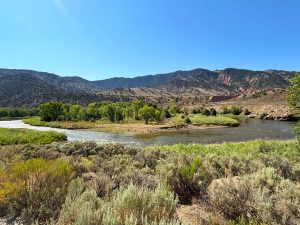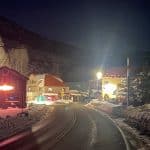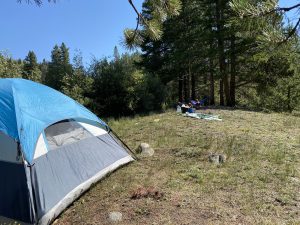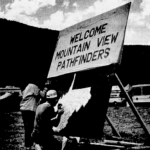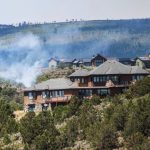Different beetle threatens Aspen
Vail, CO Colorado
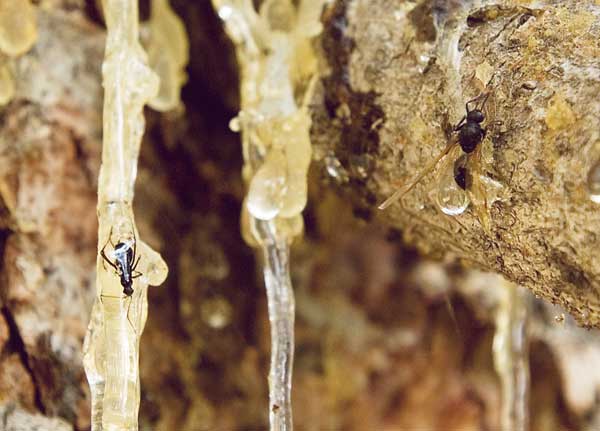
ALL |
ASPEN ” Jan Burke recalls traveling over Independence Pass and thinking “uh-oh” shortly after she began working for the White River National Forest a couple of years ago.
The east side of the pass was thick with lodgepole pine trees that looked like they had been doused in fire retardant. The trees’ needles had turned a tell-tale rust color that signals a mountain pine beetle invasion.
Burke, a silviculturist for the U.S. Forest Service, was initially concerned that it was just a matter of time before the destructive insects jumped the Continental Divide and crossed from the Pike National Forest on the Twin Lakes side of the pass to the White River National Forest on the Aspen side. Pests, after all, recognize no boundaries.
An outbreak of mountain pine beetles has transformed many of Colorado’s national forests in the last decade. An outbreak of the insects hit in the mid-1990s and intensified in the drought of 2002-04.
“In 2006, this forest insect infested over 660,000 acres in the state, up from 500,000 acres in 2005,” said a report on forest health released by the Colorado State Forest Service earlier this year.

Support Local Journalism
This epidemic has broad implications for Colorado, ranging from the threat of wildfire to potential effects on tourism and water quality.
“Nobody believed this infestation was going to be this big,” said Burke.
The epidemic shows no sign of abating. The insects will eventually exhaust their own food supply. Short of that, nothing will stop their destructive progress, said Burke.
Within two or three years, Colorado will experience a “virtual loss” of all mature lodgepole pines, she said. By a virtual loss, she means 90-plus percent of the lodgepole that is 7 inches or more in diameter will be dead.
The outbreak will inevitably spread to the Roaring Fork basin, Burke said. But the Forest Service’s research indicates the destruction won’t be nearly as severe in Pitkin County.
Huge swaths of lodgepole forest have already been devastated in Eagle, Summit and Grand counties by the mountain pine beetle. The drive along Interstate 70 has become almost surreal because forest areas commonly called “evergreens” are not, in fact, green.
Large swaths of forest are rust-colored. In some spots, graying skeletal trunks remain where the needles have fallen to the forest floor.
“We’re not going to look like Summit County, at least not from mountain pine beetle,” said Burke, referring to the Aspen area.
The Roaring Fork basin, which includes the Fryingpan and Crystal valleys, doesn’t have as many lodgepole pines as other parts of the state, Burke said.
The lodgepole in Pitkin County also tends to have greater age diversity, which means not all trees are as susceptible to disease, insects or natural mortality at one time.
Most of Colorado’s lodgepole forests ran into trouble after fire and logging claimed most of the pines in the late 1800s and early 1900s.
“As a result, many of these forests are filled with trees of roughly the same age, from 100 to 150 years old,” said the state forest service report.
But Burke believes the Roaring Fork Valley will be hit harder by another pesky insect, the spruce bark beetle. Spruce trees cover a bigger part of the Roaring Fork basin than lodgepole pine.
Burke suspects that the Roaring Fork basin could see an outbreak emanating out from Baylor Park, a part of the forest that was hit by an intense storm in 1999 that knocked down trees on 3,000 acres on the Pitkin and Mesa county line.
Spruce trees were the primary casualty.
“There is the potential to lose our mature spruce here, but it’s not going to look like Summit County,” Burke said.
Pine beetles attack live, mature trees. Females attack a tree en masse, overwhelming its defenses. They bore into the bark, then dig tunnels between the bark and wood where they lay their eggs.
The larvae spend the winter under the bark, gnawing away. They turn into pupae in summer, then fly as adults in late summer and start the process all over.
The green needles of the doomed lodgepole pines turn from yellow to green to rust. The needles fall off after a year or two, Burke said.
Spruce beetles follow a similar cycle, although the duration is two years rather than one. The needles of doomed spruce trees fall off while they are still green, making it hard to detect infested trees from the aerial surveys the Forest Service does to assess the health of the 2.3 million-acre White River National Forest.
Burke said spruce beetle epidemics typically hit every 100 to 200 years compared to 10 to 15 years for mountain pine beetles. Both beetles are always present in the forest; their numbers can balloon as the result of both human and natural disruption.
Warm temperatures and the uniform age of the lodgepole pine forests sparked the latest mountain pine beetle infestation. Spruce beetles need something to trigger an outbreak.
When an event like the Baylor Park blowdown occurs, spruce beetles get their opportunity. They proliferate in the downed, dying and dead timber. Their numbers swell to the point where they start to attack and overwhelm live trees. They tend to target trees more than 7 inches in diameter, Burke said.
And even aspen trees have fallen on tough times.
“For the second year in a row, unexplained aspen decline occurred in western Colorado [in 2006],” the state forest service reported. About 138,000 acres were dead or in decline.
“Despite many on-site inspections, experts have not determined what is killing the trees and their root systems,” the report said. “Common culprits such as animal grazing and conifer encroachment are not responsible for this ongoing die-back.”

